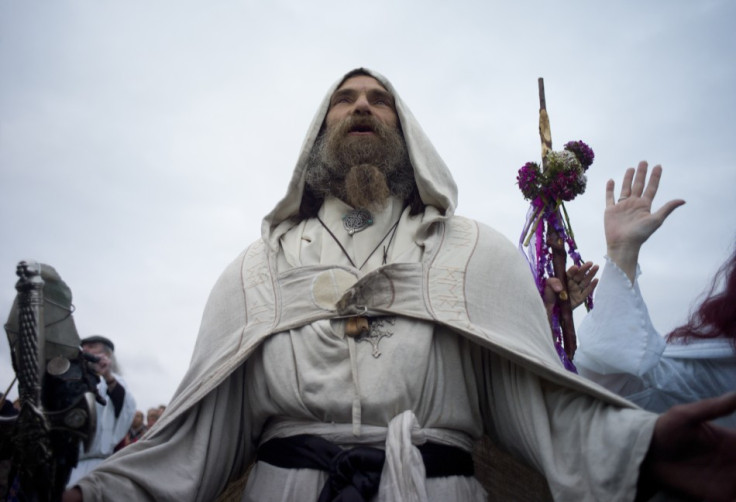Summer solstice: Revellers gather at cloudy Stonehenge for all night party

Despite heavy overnight rain and clouds obstructing the sun rise, tens of thousands of revellers gathered at Stonehenge for an all-night party to celebrate the longest day of the year this morning.
English Heritage said that 18,000 revellers descended on the site that is usually roped off to the public to witness dawn at exactly 4.43am and that the atmosphere had been 'peaceful and good natured'
The event is significant for druids, but attracted an eclectic crowd as hippies, pagans and tourists joined in, in search of a good party.
Druid protester King Arthur Pendragon, who led the event, said the weather will not hamper the festivities.
'We didn't get a great sunrise but it was dry,' he said. 'Everyone seems happy with the result.
'It is great to see the stones being used in this way, as opposed to the usual manner with tourists being herded around.'
Stonehenge, which is between 4,000 and 5,000 years old, has been the site of confrontations between worshippers, other revellers and police officers in the last few years.
The annual event at Stonehenge, near Salibsury, Wiltshire, is a modern twist on solstice celebrations which were once a highlight of the pre-Christian calendar.
The word solstice derives from a combination of Latin words meaning "sun" and "to stand still" since as the days lengthen, the sun rises higher and higher until it seems to stand still in the sky.
The Summer Solstice results in the longest day and the shortest night of the year and while the Northern Hemisphere celebrates in June, the people on the Southern half of the earth have their longest summer day in December.
At Stonehenge, festivities concentrated on the Heel Stone, a pock-marked pillar just outside the famous circle, which aligns with the rising sun and consist largely of bonfires, maypole dances and courtship rituals
The solstice is one of the few times access is granted inside the stone circle, which has been roped off since 1978, following years of erosion and vandalism.
Stonehenge's origins remain a mystery, but theories tend to suggest that the grounds were part of a huge astronomical calendar or that an ancient sun worshipping culture aligned the structure with the midsummer sunrise and the midwinter sunset.
The site was used as a cremation cemetery since its inception, archaeologists say, but it is unclear if that was its principal function.
© Copyright IBTimes 2025. All rights reserved.




















